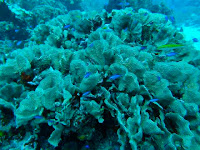Hi all,
Wow! Only 12 days until our Roatan adventure!
CHLOROQUINE: Just a quick reminder about Chloroquine. If you have decided to take this malaria prevention medication you should take the first dose this Saturday (Saturday, August 2). It should be taken with food and an occasional side effect is an upset stomach. We plan to take ours Saturday evening.... and then again next Saturday (August 9) in Roatan!
BLOG: Be sure to check out the links at the left. We will plan to post to this BLOG each day from Roatan so send the address to your friends & Family.
AIRPORT INFO: Plan to be at the airport two hours prior to departure. I plan to be there by 5:15 AM. The airline agent will need to see your passport and you may not be able to use a kiosk for check-in since this is international travel. Please be sure that the checked bag labels have “RTB” (Roatan airport code) as the final destination. Sky Caps cannot check your bags to the final destination. Remember that there is a weight limit of 50 pounds for checked bags and 40 pounds for carry-ons. (One checked bag at 55 pounds will cost you extra but two checked bags [say 25 & 30 pounds] are fine!) You may want to check out possible airport car pooling to share the parking expense. A list of participants with phone numbers was in the pre-trip packet -call if you need one.
GROUP SHIRT: We will plan to all wear the group shirt for our return trip. Feel free to wear it on the way to Roatan as well if you want to but any hand laundering will be your responsibility (if needed)!
WEATHER: The surface water temperature around Roatan is about 83°F or a little warmer. The daytime high air temperatures are reported around 88°F and nighttime lows 80°F. I think the seaside breezes will keep us pretty comfortable. --Don’t bother with a sweater unless you plan to use it in the airport! This week the Caribbean is very calm following a week of record setting storms! The BLOG has a few weather links to follow and I have added the Weather Underground Tropical site that has a great BLOG discussion on the right side.
CARRY-ON BAG: It’s always a good idea to plan as if your checked bags may take an extra day to arrive. I usually carry snorkeling & Mask and a swimsuit as well as a change of clothes and needed toiletries & prescriptions... You can also carry-on a personal item such as a camera or computer bag.
C-CARDS: Certified divers must have your C-card if you plan to dive.
BAG YARNS & TAGS: Please remember to put the red, green and yellow yarn on each of your bags. Let me know if you need more. AND be sure to put the green "AKR" tags on all your bags. The yarns help us to identify group bags and the AKR tags get your bags to the room without your effort!
BOOKS:
The following books are available for loan over the summer and to take along on the trip if you have space and weight capacity. Most of these books are also available at RIMS.
The Peterson Guides by Kaplan give you a good description about each major phyla and each habitat we will visit. Gene Kaplain, biology professor at Hofstra University, directed the Marine Lab (HUML)in Jamaica and wrote these books as a course text for students visiting the lab.
Kaplan, E., Field Guide to Coral Reefs, Caribbean and Florida, 1982, Houghton-Mifflin Co., Boston, MA. (Peterson Field Guide #27) (ISBN: 0-395-46939-2)
Kaplan, E., Field Guide to Southeastern and Caribbean Seashores, 1988, Houghton-Mifflin Co., Boston, MA. (Peterson Field Guide #36) (ISBN: 0-395-46811-6)
Marty Snyderman is a well know marine life photographer. His book has great photos and has been described as the "who lives where" and "who eats who" guide.
Snyderman, Marty and Clay Wiseman, Marine Life, 1996, Aqua Quest Publications, New York, NY. (ISBN: 1-881652-06-8)
The best available Photo ID books for the Caribbean are the following. They are organized for ease of identifying things you see in the water and Humann's fish ID terminology has become the standard for field descriptions. All three books have recently come out in new editions. I have
Humann, Paul, Reef Fish Identification, 1994 (second edition), New World Publications, Inc., Jacksonville, FL. (ISBN: 1-878348-07-8)
Humann, Paul, Reef Creature Identification, 1992, New World Publications, Inc., Jacksonville, FL. (ISBN: 1-878348-01-9)
Humann, Paul, Reef Coral Identification, 1993, New World Publications, Inc., Jacksonville, FL. (ISBN: 1-878348-03-5)
Deloach, Ned and Paul Humann, Reef Fish Behavior: Florida Caribbean Bahamas, 1999, New World Publications, Inc., Jacksonville, FL. (ISBN: 1878348280)














































